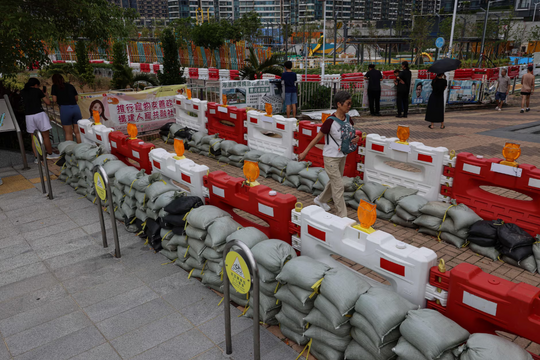With the South awake every night
(Baonghean.vn) - Remember the early years of fighting against the destructive war of the American imperialists, Nghe An could not balance the food demand. The rice produced under the bombs, in the conditions of floods and fierce natural disasters still had to be divided into three parts: one part to feed the soldiers, one part to share with 30,000 people from Vinh Linh who evacuated to the area, and a small part to feed the people, to maintain the rear. Yet every year, Nghe An still collected and saved over 6,000 tons of food, 500 tons of food, 2,000 tons of salt to send to the South. The Association of Mothers of Soldiers of Nam Dan, Dien Chau, Thanh Chuong established "Rice jars to feed the troops" and "Truong Son rice grains".
On the roads of desire
Station 9 set up 20 military reception stations.from Quynh Chau (Quynh Luu)to Nam Hoanh, Nam Kim (Nam Dan). On the nights welcoming the troops, the whole village busily arranged food and lodging, gave blankets and mats for the troops to sleep soundly after the arduous march. Every morning, the village roads and alleys were covered with "Truong Son" stick marks, meaning that last night another army marched south.
Under the artillery fire from the sea, fishermen in Dien Chau and Quynh Luu still collected, dried and packed thousands of tons of anchovies, mackerel and herring in sacks to send to the front. Cooperatives of Phu Nghia (Quynh Luu) and Van Phan (Dien Chau) created the technology of manually distilling "concentrated fish sauce", which is convenient for transportation, preservation and use on the battlefield.
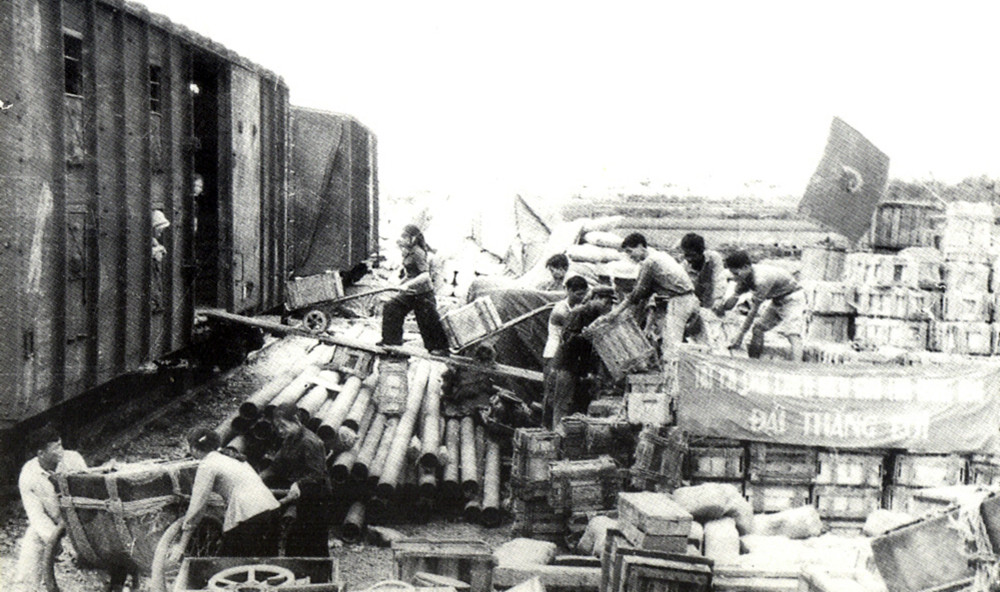 |
| Loading goods to the battlefield. Photo archive |
In early 1966, to ensure the mechanized transport force, operating on the front line, the General Department of Forward Logistics assigned the responsibility of the rear line to the provinces: Thanh Hoa, Nghe An, Ha Tinh. Nghe An Provincial Party Committee established a unified transport command, directing the organization of forces to receive and transport military goods from Khe Nuoc Lanh (bordering Thanh Hoa), to La Khe (Ha Tinh). Nearly 200 liberation vehicles, "Zin 3 bridges", "Gat 51" of Transport Enterprise No. 1 (Group A) under Nghe An Transport Department were organized into squads, platoons, and military transport companies. From the evacuation sites (Hong Son, Hoa Son), Do Luong and Nghia Thuan (Nghia Dan), Nghe An motor transport forces passed through fierce key points: Ho Bridge, Khe Nuoc Lanh, Hoang Mai ferry, Giat Bridge, Yen Ly station, Truong Bon, Phuong Tich ferry, Linh Cam ferry, Ben Thuy ferry, Truong Tram, Dong Loc intersection, Dia Loi ferry, successfully transporting tens of thousands of tons of goods to the South.
The "VT5" and "VT6" transportation campaigns were born, becoming the urge to overcome bombs, bullets, and death to bring goods to the front line in every officer and soldier of Nghe An transportation. Not only stopping at La Khe, the main motorized transportation unit of Nghe An also proactively "cut the supply and cross the line" to push goods through Deo Ngang Pass, cross Long Dai ferry, and deliver goods to military station 12, close to the front line of Route 9. During the days and nights of the transportation campaign, in the North Korean bunker, the Command and Dispatch Station 30, Mr. Le Van Khoi almost stayed awake, anxiously following each vehicle and each route. During the campaign month, Dien Chau established 28 anti-aircraft light stations, prepared 50,000 bags of soil, and was ready to fill bomb craters and prevent mud on the 205 bypass. Vinh City mobilized 500 three-wheeled vehicles, horse-drawn carts, and 200 cyclos to evacuate goods at military delivery points. Along the transport route, the anti-aircraft artillery regiments 233, 222 and the anti-aircraft battalion 14 (Nghe An Provincial Military Command) built mobile battlefields, fighting back all directions of bombing and shelling by American aircraft. At the moment before the Mau Than 1968 general offensive, the whole of Nghe An was like a "united army station" concentrating human and material resources onTruong Son strategic transport route, for the vast battlefield of the South.
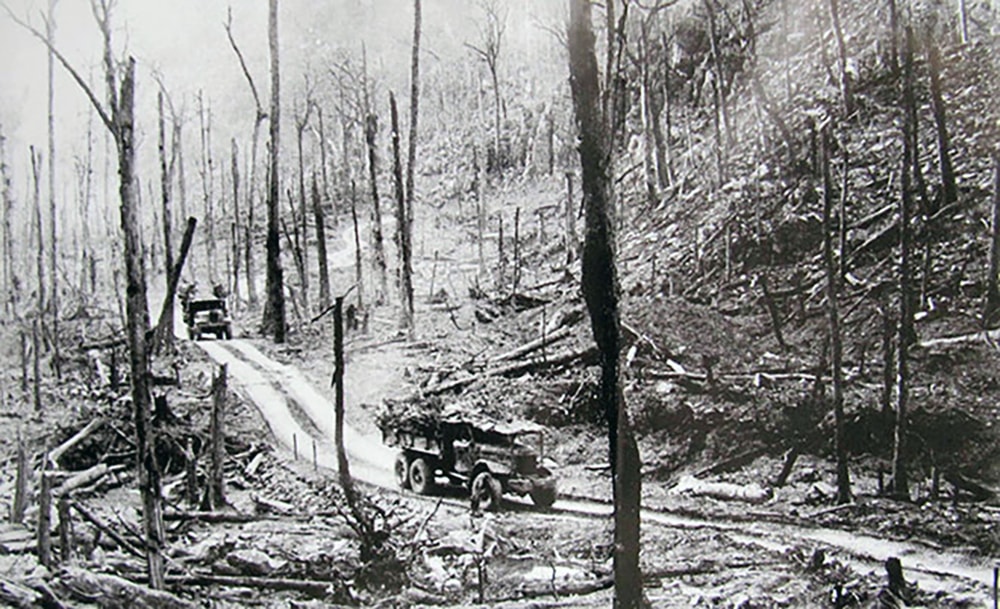 |
| Ho Chi Minh Trail - a strategic transportation route in the resistance war against America. Photo: Document |
From 1965 to the end of 1967, Nghe An trusted, loved and wholeheartedly sent to the front 18,000 young, elite boys, including 6,000 new soldiers to fight and serve in logistics on the strategic Truong Son transport route. If calculated by mid-1975, the Truong Son Corps (established on July 29, 1970) had received a number of new soldiers equivalent to 4 divisions of Nghe An's children. That is not to mention more than 5,000 frontline laborers using bicycles to carry goods to the front, extending the transport route south of Zone 4.
Forever 20 years old on the way to war
When the 559th Division Command decided to open Route 20, connecting Eastern Truong Son with Western Truong Son, the section of road that Nghe An youth took on was at the key point of Ca Roong. Km 52 to Km 59. At this fierce key point, every day, all kinds of American and puppet jet planes attacked on average 20 times. More brutally, they spread dioxin densely in an attempt to stop the road-opening force. They dropped fluorescent bombs, napalm bombs, phosphorus bombs, butterfly bombs and time-delayed bombs. Soldier Nguyen Ba Thanh, driving the forklift, sacrificed his life at Km 59. The command passed down "Keep the road like keeping blood in your heart" urged Nguyen Van Khoi, C168, who was later awarded the title of Hero of the Armed Forces, to create a way to dig bomb shelters on the road slope, limiting casualties and ensuring the construction time to clear the route.
During the 70 days of opening Road 20, many brave examples of the Nghe An Youth Volunteer Force always shone. Squad leader Dinh Bat Tuyen, from Nghi Cong (Nghi Loc) replaced the position of driving the bulldozer when the main driver was injured. Platoon leader Ho Ba Thanh, C168, and the group of soldiers held the key underground point Aky, from Km 62 to Km 72 throughout the rainy season of 1966, ensuring continuous road clearance under the control of American bombs and bullets. After the campaign to open the road "Quyet thang - Road 20", avoiding the underground water pocket in Seng Phan, connecting the Eastern Truong Son at Ka Toc, Lum Bum (Kham Muon - Laos), the Nghe An Youth Volunteer Force, together with Station 8, stuck to the key point to transfer goods to the inner route and fill bomb craters, prevent mud, rescue vehicles and goods at the key point of the A-shaped "turn".
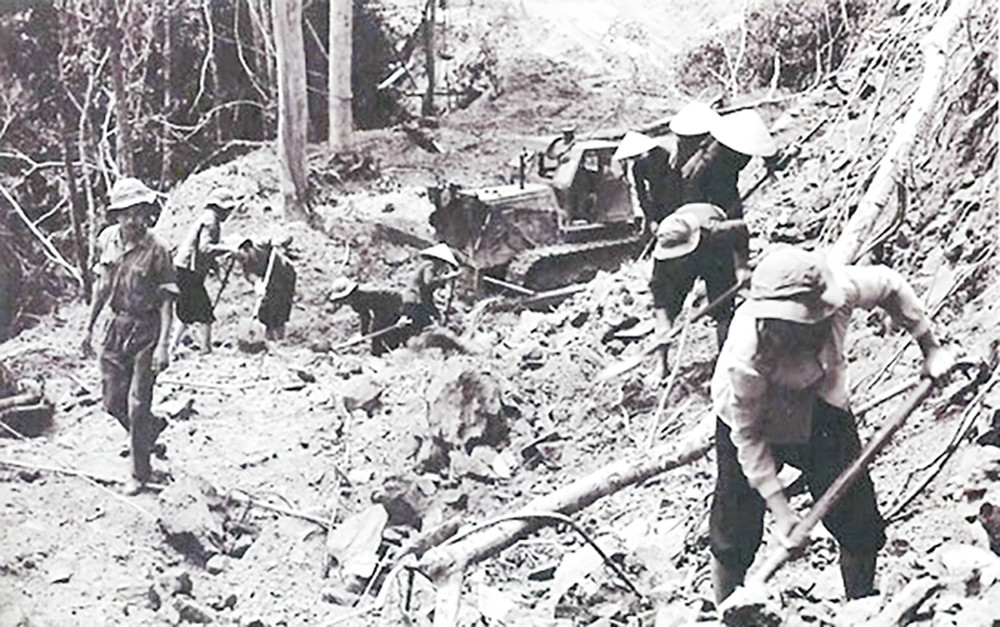 |
| Soldiers and Youth Volunteers break rocks to open road 20 Quyet Thang. Photo archive |
On February 15, 1969, after a B52 bomb attack on the route, Nguyen Van Khoi (just promoted to Company Commander), Vo Van Tien, Ho Trung Tu, both from Nghi Loc and 5 other comrades sacrificed their lives. The blood and bones of the cadres and youth volunteers from Nghe An forever remained the 20 years of their lives on the road to battle. Engraved on the 16-year history of fierce fighting to secure the Truong Son route, Lieutenant General Dong Sy Nguyen, Commander of the Truong Son Corps, cherished and respected it when writing in the history of the Truong Son Corps: “Nghe An is the origin of the Ho Chi Minh trail. Nghe An has contributed to creating the legend of the road named after Uncle Ho. What is more precious is that Nghe An is one of the provinces with the largest and earliest number of troops entering the Truong Son battlefield and is also the province that suffered the greatest sacrifices and losses”.
Once and Forever
Events and historical witnesses always live forever. Today's young generation must have known that the Truong Son road started from the "0" milestone, Lat town, Tan Ky, which appeared at the time when Lieutenant Colonel Vo Bam led the "Special Task Force" to light the way to the South. Battalion 301 opened the Truong Son transport route in 1961 at Khe Ho (Western Quang Binh), commanded by Captain Chu Dang Chu, a native of Nam Cuong, Nam Dan. The person who carried goods to the front on his shoulders for four years on the Truong Son road with a total distance of half a world was the armed forces hero Nguyen Viet Sinh, from Xuan Hoa, Nam Dan. And the first soldier to die in the battle to protect transport stations No. 5 and No. 6 was Sergeant Nguyen Duc Thong, from Dien Phong commune, Dien Chau. He died on April 4, 1961 in Dong Tro (Western Thua Thien) at the age of 30. In a time of bloodshed, the whole Nghe An, the whole country and the South stayed awake every night.
Towering, close together and solemn are the martyrs' graves inTruong Son Cemetery. Among the 10,000 martyrs gathered here, Nghe An children also accounted for 1,000 people. There is no greater recognition than that for the Nghe An rear in the long and persistent resistance war against the US, for the deep affection, the bloodshed and the soft heart with Truong Son, with the great frontline of the South once and forever.
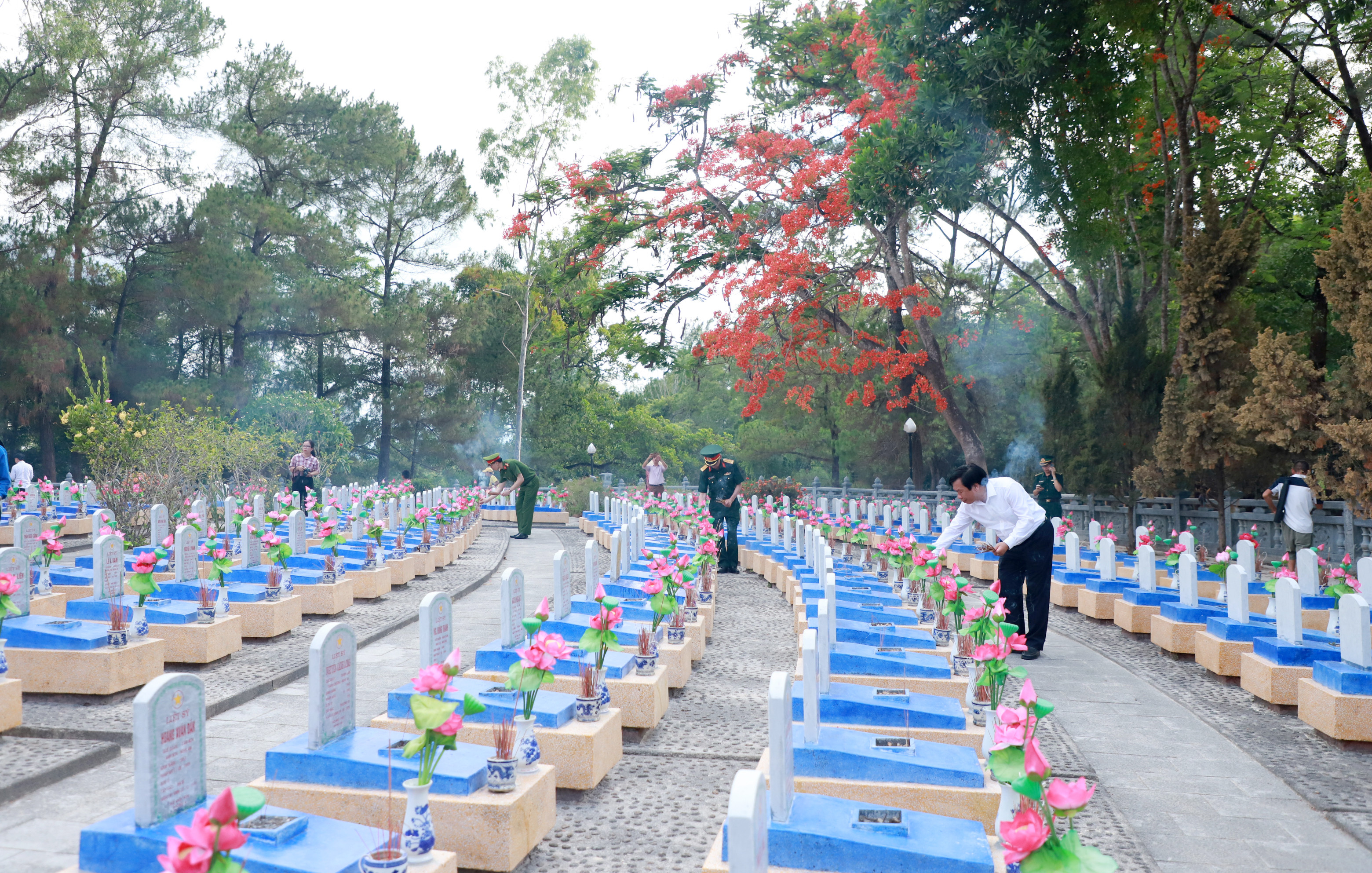 |
| Offering incense at the graves of martyrs from Nghe An province at Truong Son National Martyrs Cemetery. Photo: Thanh Duy |

